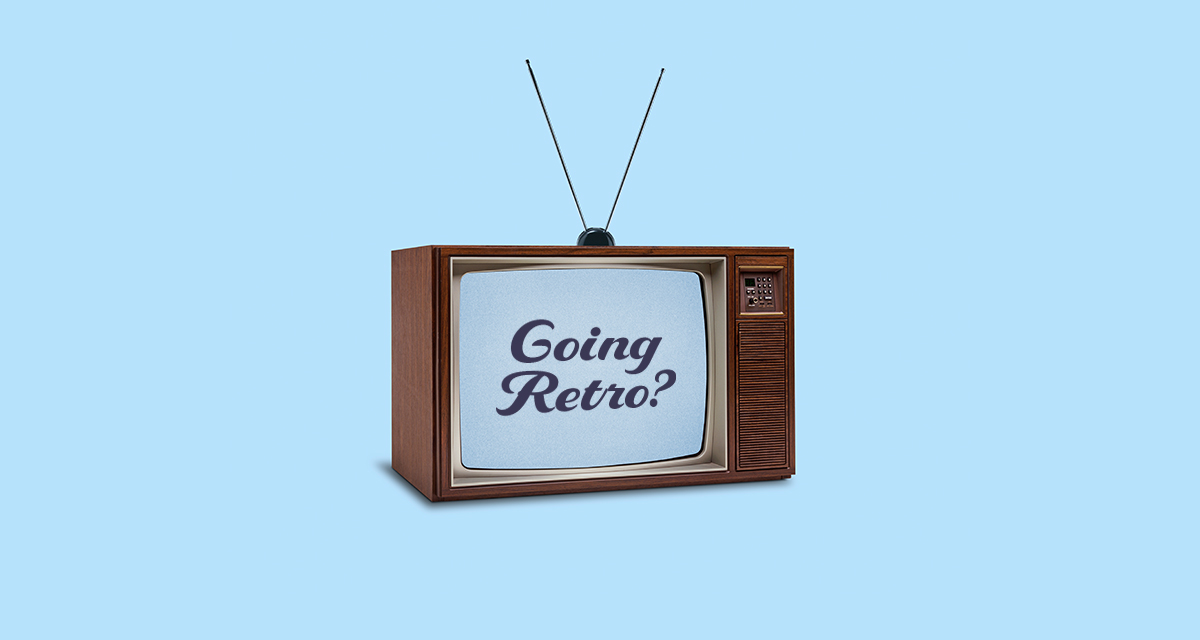With hectic schedules, work to be done and bills to be paid, it’s easy to get caught up in the hustle of modern life. A glimpse back to our childhood, when all we had to worry about was what we would eat for lunch helps us feel calm, safe, and happy.
That’s where retro marketing comes in. You can’t predict the future, but can remember what’s happened in the past. Getting the chance to relive it even for a moment brings us a sense of certainty and comfort. For example, a brand like Coca-Cola takes full advantage of retro advertising. No matter where you’re from or what life was like during your childhood, almost everyone can associate a memory with Coca-Cola. Whether it was sitting outside on a hot summer day or seeing those iconic polar bears every Christmas, Coke has built its strategy around transporting us back to when things were simple.
So as we enter a decade that’s sure to be filled with tons of new, shiny things, it’s a better time than ever to look back on past decades, and integrate retro marketing into your strategy.
1. What it is
Retro marketing taps into those fond memories of your favorite childhood cartoon, or that pair of shoes you always wore as a teenager. It serves as the connection between your past and your present, making you feel warm and fuzzy, all while promoting a brand or product. But really pulling out those memories in a genuine way is harder than it may seem. When it comes to marketing, everything “retro” is actually brand new; it simply plays into themes of times past. When done right, it provokes a strong emotional response.
2. Why it works
With so much new technology available in today’s day and age, why look backwards? Well, nostalgia actually has a powerful psychological impact that can make us feel less bored, less anxious, less alone and, believe it or not, can literally make you warmer. Not to mention, the positive emotions that come along with looking back on days gone by is enough to drive someone to make a purchase. And when you remember something that makes you feel happy, all you want to do is find others who share the same memory. Nostalgia creates communities, making retro advertising extremely shareable.
3. How to do it
Although throwing it back to the early days of your brand will create a strong connection with loyal fans, you don’t need to have a Coca-Cola-level legacy to employ retro marketing strategies. Take advantage of social media trends like #throwbackthursday, or try comparing then to now by showing what a version of your product would look like in past decades. Nostalgia marketing comes in all forms, whether it’s re-launching a past version of a product, producing a retro-inspired social media post, or even just referencing that one old movie and asking your audience, “remember this?”
4. Who’s done it well
As technology progresses and life moves faster, brands are increasingly tapping into the feelings of joy that memories provoke. One great example of a campaign that perfectly combines retro themes with new-age tech is Adobe’s “Joy of Sketching” series, that not only brings back a flood of memories for those of us who grew up with the soothing voice of Bob Ross on our TV, but also demonstrates the new, advanced features of the Adobe Sketch program. To really take the audience back, some brands even got the original actors to reprise their roles like in Spotify’s 2016 “NeverEnding Story” ad, or Dannon’s “Full House” themed series. It can even be as simple as repurposing retro products, like the NFL launching New England Patriots “throwback jerseys” that sold out in just 2 minutes.
Feeling something as powerful as nostalgia encourages us to click, like, comment and purchase. Our memories are the foundation of who we are, and nostalgia-based marketing leaves an impact that other strategies simply can’t. Helping your audience see a little bit of their childhood will keep them coming back for decades.


